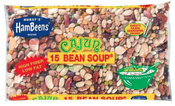4.L.5 Characteristics & Growth of Organisms
In this unit, students will learn about the growth and development of plants and animals. As plants and animals grow they develop certain physical adaptations that help them to survive. Additionally they develop adaptations that help them to reproduce, which helps their species to survive. Students will use millipedes, fiddler crabs, and African dwarf frogs as animal specimens to conduct observe and study. For the study of plants, it is recommended that teachers begin the unit by germinating seeds and then have students transfer them to soil.
In preparation for this unit:
1) obtain grass seed, soil, and pots or plastic cups
2) request delivery of millipedes, frogs, and crabs
In preparation for this unit:
1) obtain grass seed, soil, and pots or plastic cups
2) request delivery of millipedes, frogs, and crabs
4.L.5A.1 Obtain and communicate information about the characteristics of plants and animals to develop models which classify plants as flowering or nonflowering and animals as vertebrate or invertebrate.
|
Early in the unit, show students various types of seeds, have them sketch the seeds and describe them in "scientist" terms. Students may classify them into groups. For this you may purchase a bag of 15-bean soup at the grocery store.
-If the beans are dampened, they will absorb water and swell. Students may take before and after observations. They may weigh the beans before and after soaking. -Students could sort the different types of beans and measure the germination time for each and chart it. |
-Since students will have 3 animal specimens in class, it may be advisable to offer them 3 plants to study. Apple trees, pine (Loblolly), and grass (Fescue) may offer some diversity.
4.L.5A.2: Analyze and interpret data from observations and measurements to compare the stages of development of different seed plants.
-Have students study the chart of average weight of a baby from birth to 1 year of age. Teachers may want to remake the chart with whole numbers. Students may make a line graph of this information.
-Study the germination chart.
How do you think this experiment was performed? How many different types of seed are shown in the chart? How many of each type of seed would you guess were tested? How many days would you say it takes for linseed to germinate? How many days would you say it takes for canary seed to germinate? How many days would you say it takes for canola seed to germinate? How many days does it take for millet to germinate? What would you say should be done for the canary seed and millet to germinate?
-Study the germination chart.
How do you think this experiment was performed? How many different types of seed are shown in the chart? How many of each type of seed would you guess were tested? How many days would you say it takes for linseed to germinate? How many days would you say it takes for canary seed to germinate? How many days would you say it takes for canola seed to germinate? How many days does it take for millet to germinate? What would you say should be done for the canary seed and millet to germinate?
4.L.5A.3: Develop and use models to compare the stages of growth and development in various animals.
4.L.5A.4 Construct scientific arguments to support claims that some characteristics of organisms are inherited from parents and some are influenced by the environment.
4.L.5B.2 Construct explanations for how structural adaptations (such as the types of roots, stems, or leaves; color of flowers; or seed dispersal) allow plants to survive and reproduce.
4.L.5B.3 Construct explanations for how structural adaptations (such as methods for defense, locomotion, obtaining resources, or camouflage) allow animals to survive in the environment.


